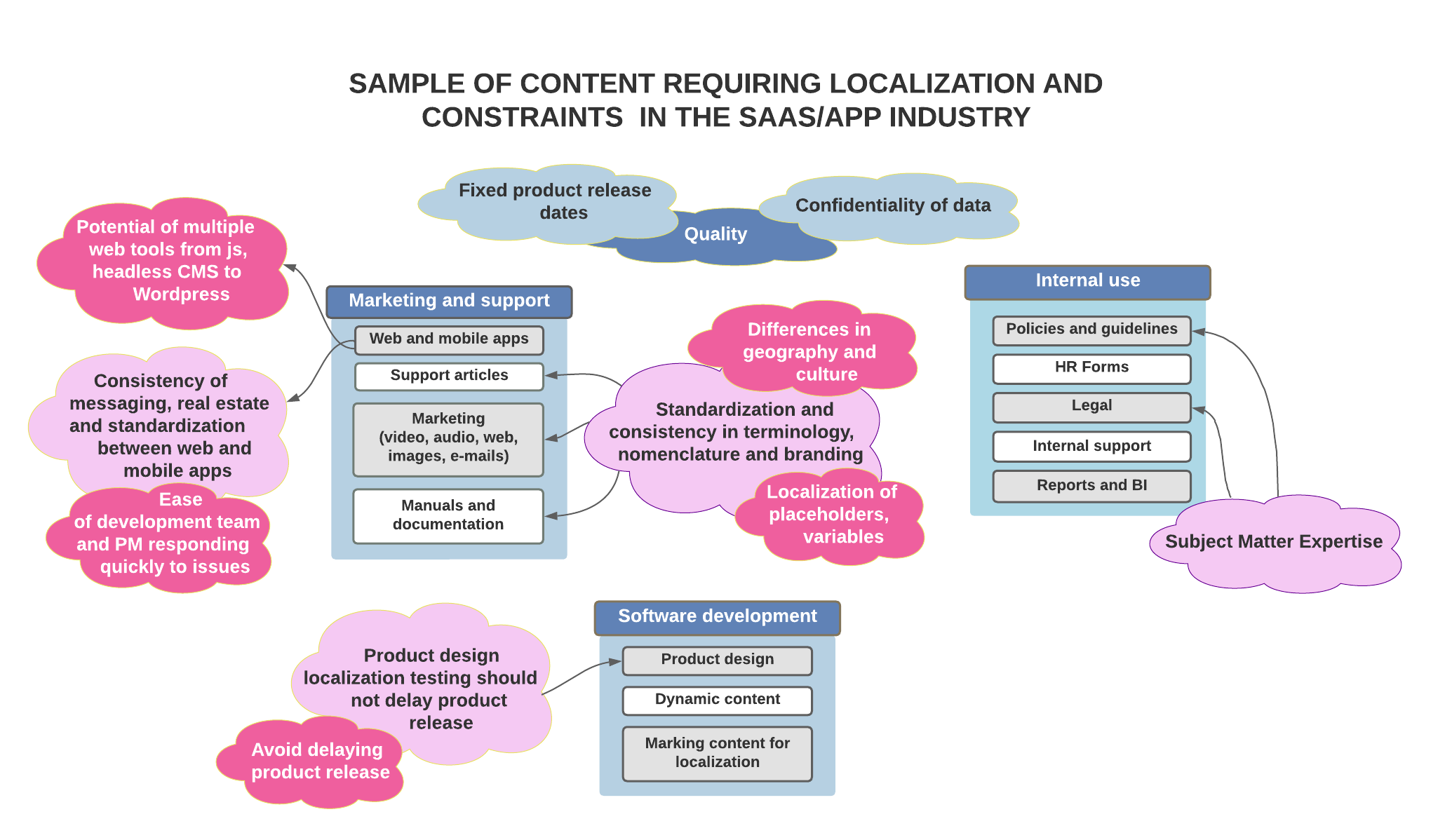
By Anthony Dimitrokalis
Translation & Localization Solutions Specialist
Maintaining Product Release Dates When Localizing Designs and Software
What building architects, car designers, and software programmers have in common when internationalizing
These design processes have an iterative approach, producing the final product in layers. In Software Development, it’s known as Agile. However, that’s where the similarity ends. Localization is less critical for constructing a building or a car. Software release cycles are quicker, thereby making localization essential for international markets.The bottlenecks of a design for international markets
 For those who speak English and French, it’s evident that five words in English may take 10 in French when you add the necessary structure. Those that speak Korean, Japanese, or any form of Chinese understand that each character in these languages takes up more space than in other languages. None of these constraints matter much for websites, but they do for mobile devices with limited space.
Messaging has to be consistent across all platforms. Hence many companies design messaging around mobile devices. This design methodology frequently solves the differences between English and French. However, it doesn’t help with languages that use double-byte characters.
Software design teams then test translations in their design tools, such as Figma and Sketch, before software development teams implement the correct nomenclature in the software, which due to time constraints, they don’t always do because the development team has to wait for the translations the design team uses to finish.
Once the developers have placed the final text in the software, this text is translated again, which would be easy if the text remained the same as in the designs and even the same across all web and mobile platforms. Still, in reality, only 60-80% do. Since deadlines take priority, two things happen:
For those who speak English and French, it’s evident that five words in English may take 10 in French when you add the necessary structure. Those that speak Korean, Japanese, or any form of Chinese understand that each character in these languages takes up more space than in other languages. None of these constraints matter much for websites, but they do for mobile devices with limited space.
Messaging has to be consistent across all platforms. Hence many companies design messaging around mobile devices. This design methodology frequently solves the differences between English and French. However, it doesn’t help with languages that use double-byte characters.
Software design teams then test translations in their design tools, such as Figma and Sketch, before software development teams implement the correct nomenclature in the software, which due to time constraints, they don’t always do because the development team has to wait for the translations the design team uses to finish.
Once the developers have placed the final text in the software, this text is translated again, which would be easy if the text remained the same as in the designs and even the same across all web and mobile platforms. Still, in reality, only 60-80% do. Since deadlines take priority, two things happen:
- The company’s image and branding may differ across web and mobile devices for both source and target languages.
- Localization becomes more expensive.
- The product might be released with un-translated content or, even worse, with translations meant for a previous release.
Is there a better way
Each department involved can alleviate this issue in many ways, from modern AI advancements in design tools to traditional translation memory and glossary in localization tools. Many CAT tools have penalty profiles and other advancements to help further. Modern AI tools can also be designed to accommodate these differences, but like all AI tools, they take time to learn. Here’s a question. What if there was a way to solve the problem at the source, i.e., the root cause, which may even be before the product design phase? What if there was a way to properly synchronize the messaging between design and development before product release, thereby standardizing messaging, increasing turn-around time, and lowering translation costs? Imagine if your software controls equipment or helps save lives. Doesn’t this help even more? Standardization is always the key to increasing profits, turn-around times, reliability, lowering support costs, and satisfying customers.Try out our FREE localization QA audit!
Don’t forget to accept our offer of giving you a free localization QA audit! We’ll test your website to see if it passes all of our localization checks, then provide you with an audit on just how localized your website is.
Simply click here https://gthtranslation.com/lqa-services, fill in your details at the bottom of the page, and we’ll do the rest! The LQA audit is vital as it will show you if you’re properly communicating with your clients or customers (in different geos).



 English
English Greek
Greek +44 730 8577 353
+44 730 8577 353 +357 25 55 42 10
+357 25 55 42 10